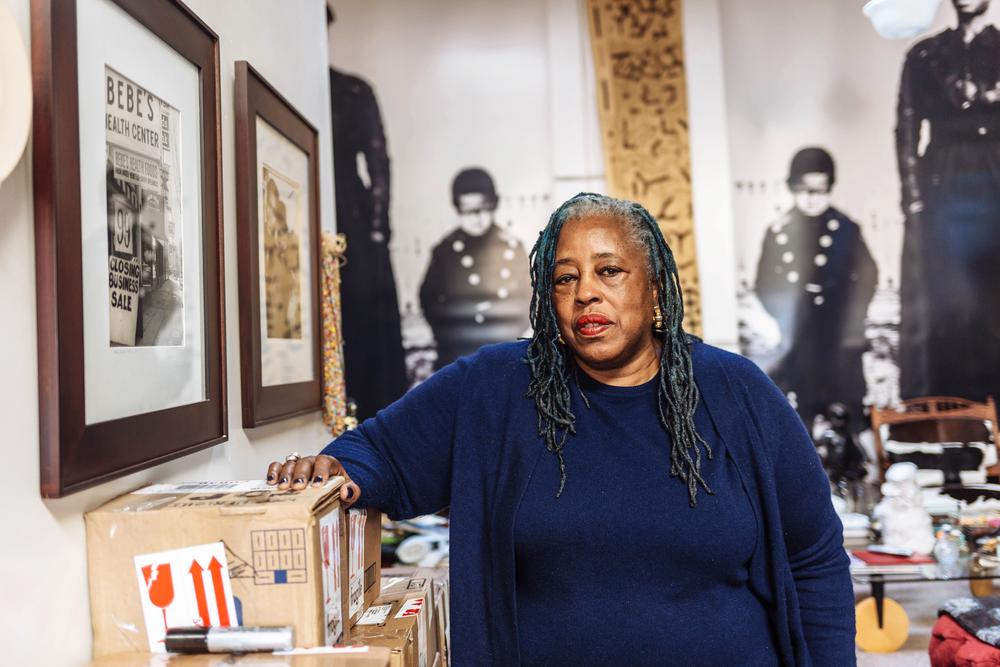Mildred Howard. Legacy of Activism
Mildred Howard was born in San Francisco in 1945. Her family had moved from the farmland of southeast Texas during World War II to work in the Hunter’s Point shipyards. After the war, they moved to a predominantly Black neighborhood in South Berkeley. Describing herself as “part Panther and part flower child,”1 Howard grew up in the East Bay during the 1960s, studying art and ballet at the Oakland Museum of California and the South Berkeley Community Church. As part of an emerging community of Black artists and musicians, she earned her MFA in 1985 from the Fiberworks Center for the Textile Arts, which was affiliated with nearby John F. Kennedy University. Howard worked with tapestry and old family photographs in pursuit of carrying on her family’s legacy of activism and civic leadership. Her practice soon expanded to collage, sculpture, and installation, through which she found she could heighten the poetic and political register of historic objects and events.
Mildred Howard, in Judith Bettelheim, “A Beautiful Tree Has Deep Roots: Mildred Howard,” in Mildred Howard: Ten Little Children Standing in a Line (One Got Shot, And Then There Were Nine) (San Francisco: San Francisco Art Institute, 1991), 12. ↩︎
